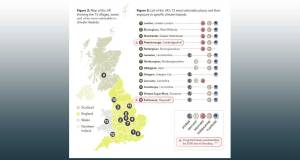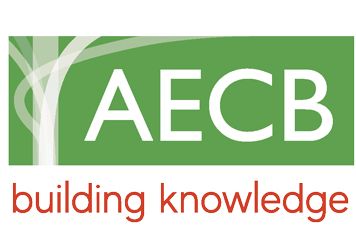
- General
- Posted
Cavity wall builds can meet RIBA carbon targets, new analysis suggests
A detailed analysis of the embodied carbon of six common build types has indicated that dwellings built with business-as-usual build specs of cavity wall construction and strip foundations may be able to meet the revised embodied carbon targets for dwellings in RIBA’s 2030 Climate Challenge.
This article was originally published in issue 38 of Passive House Plus magazine. Want immediate access to all back issues and exclusive extra content? Click here to subscribe for as little as €10, or click here to receive the next issue free of charge
The RIBA document has come under scrutiny recently after its 2030 embodied carbon target for dwellings was eased from 300 to 625 kilograms of CO2 equivalent per square metre (kgCO2e/m2).
The analysis, published in issue 38 of Passive House Plus, was commissioned by the Passive House Association of Ireland (PHAI) and undertaken by the Association for Environment Conscious Building (AECB). A house design for a social housing unit with 84 m2 gross internal area (GIA) provided by Cork City Council was analysed using six different variations of wall and foundation specs. The analysis also included specs for roof, intermediate floors, stud walls, windows, and an air-to-water heat pump, but excluded items such as fixed furniture and equipment, ventilation, heating and water distribution systems, tiling and staircase.
The base case included two variations – a brick clad cavity wall, and a rendered block cavity wall, both on conventional strip foundations. The brick clad option totalled 526 kgCO2e/m2 GIA, indicating it would likely comply if the missing elements were included. The rendered cavity wall build and a single leaf 215 mm block with external insulation, both on conventional foundations, respectively totalled 496 and 492 kgCO2e/m2.
Meanwhile a variant including cellulose-insulated timber frame with cement boards and insulated foundations integrating 50 per cent GGBS totalled 369 kgCO2e/m2.
RIBA has defended its decision to make the embodied targets in its 2030 Climate Challenge significantly easier to achieve. The previous target of 500 kgCO2e/m2 for non-domestic buildings has also been replaced by two separate targets: 540 kgCO2e/m2 for schools and 750 kgCO2e/m2 for offices. The 2025 target for operational energy in dwellings has been tightened from 70 to 60 kWh/m2/ yr. However, it is the change to the embodied carbon target for domestic buildings that has raised most eyebrows.
“Seeking radical, systemic change is one of the core values that brings us together as a network, ” Joe Giddings of the Architects’ Climate Action Network told the Architects’ Journal. “So many, including myself, were disappointed to see RIBA climbdown on their targets for 2030.”
However, RIBA defended the changes, and said the new targets aligned it with similar benchmarks set by other organisations. “When we launched the 2030 Climate Challenge two years ago, we set initial targets, but were clear that these would evolve,” said RIBA president Alan Jones. “Since then, industry knowledge and data has significantly increased, and we have worked closely with key organisations such as LETI, IstructE, UKGBC and the Whole Life Carbon Network to ensure that our embodied carbon targets and approaches are aligned and consistent.
“The embodied carbon targets have been refined based on more accurate benchmarks, but the 2030 targets for operational energy and potable water use remain unchanged, and some sector-specific 2025 targets for energy consumption have been tightened.
“To successfully reduce the huge negative impact of construction, we must collaborate across the entire sector and, as architects specifically, change our approach to designing buildings. These targets are ambitious, but achievable. I urge all practices to sign-up to the challenge. We need to attempt to achieve these targets on our projects now.”
The LETI (London Energy Transformation Initiative) has set it owns benchmarks for embodied carbon, and RIBA’s new targets coincide with a ‘B’ rating under LETI’s system, but LETI also assigns more ambitious A, A+ and A++ ratings for buildings that achieve under 450, 300 and 150 kgCO2e/m2 respectively.
However, while LETI’s targets exclude the up-front carbon footprint of on-site renewable electricity generators, RIBA includes them, leading to questions about how comparable the two benchmarks are.
Speaking to Passive House Plus, the passive house architect Mark Siddall, a technical advisor to both the AECB and the Passivhaus Trust, said he thinks the previous target of 300 kgCO2e/m2 was very onerous, given that it includes building life cycle stages A (product stage and construction process) through to C (end of life).
However, he questioned whether the embodied carbon of on-site renewable energy systems should be included in the target, as he said this would mean a theoretical dwelling with no “bolt on” renewable energy systems, and that only pays rudimentary attention to the embodied carbon of its building fabric, could produce a similar embodied carbon score to a dwelling with low embodied carbon fabric and a solar PV system. He gave the example of his Larch Corner passive house in Warwickshire, for which the solar PV system accounted for about one-quarter of the stage A embodied carbon score.
He suggested that the embodied carbon of on-site “bolt on” renewables such as solar PV should be reported, but not included in the main target.
The RIBA 2030 requirements require calculation of embodied carbon in accordance with the RICS guidance document, ‘Whole life carbon assessment for the built environment’, with analyses to include including a minimum of 95 per cent of the cost, and seven of eight building element groups, including substructure, superstructure, finishes, fixed FF&E, building services and associated refrigerant leakage. The exception is external works.
Speaking to Passive House Plus, RIBA sustainable development advisor Jess Hrivnak said: “We appreciate many projects won’t be undertaking whole life carbon assessments as part of normal project programme. The intention is not that projects should do these retrospectively for the sole purpose of data collection.”
Hrivnak said RIBA is interested in understanding if no whole life carbon assessment took place, why not. Or – if high level embodied carbon evaluation was undertaken – the scope and stage that any calculations were carried out. “It is just as important for us to understand the ‘why nots’ – the barriers and limitations – as it is to increase whole life carbon datasets of completed projects.” said Hrivnak, “It is only through collaborative data sharing, and being transparent about boundaries, that we can increase industry knowledge and collective improve the accuracy and precision of our predictions of the impact of the built environment.”
Related items
-
 September’s AECB environmental construction conference seeks to spark debate among industry experts
September’s AECB environmental construction conference seeks to spark debate among industry experts -
 Climate report warns overheating crisis threatens UK
Climate report warns overheating crisis threatens UK -
 Sustainable building leaders crowned at Exemplar Awards
Sustainable building leaders crowned at Exemplar Awards -
 Barratt launches record passive house scheme
Barratt launches record passive house scheme -
 Green homes and finance join forces for growth
Green homes and finance join forces for growth -
 Irish and British associations unite for conference as passive house explodes
Irish and British associations unite for conference as passive house explodes



